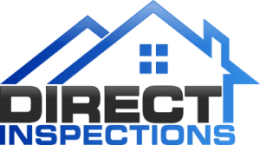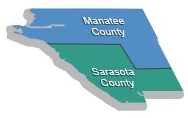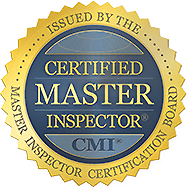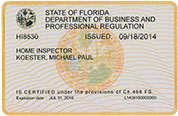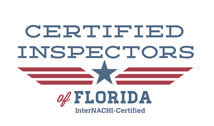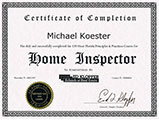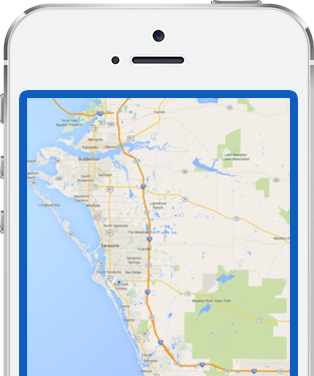IR Cameras: Inspecting for Moisture Intrusion
Scientific discoveries are often adapted for uses their inventors could not have imagined. Infrared (IR) photography is a perfect example – originally a military technology, it has a remarkable utility in assisting home inspectors and tradesmen to locate hidden moisture and temperature differences in building materials.
Infrared cameras are particularly useful for inspecting homes in the Sarasota & Manatee region. Due to the amount of rainfall and the large differences in temperature throughout the year, infrared cameras are particularly useful in finding areas of moisture intrusion in the ceiling, drywall, in doorways and window frames. Direct Inspections uses the FLIR E8 which employs a dual image overlayment technology which enhances accuracy.
Infrared Imaging and Water Damage
An infrared imaging device detects variations in the temperature of subjects captured in its viewfinder. The deviations in temperature are represented visually as differences in color – hence the name, “thermal imaging.” IR imaging reveals latent moisture in a structure by displaying it in contrast with the building materials. The intrusion of water within walls, floors, ceilings and support structures from mechanical and plumbing leaks, as well as the buildup of ambient moisture can be detected this way. In real estate inspection terms, this tool is invaluable because it allows moisture intrusion to not only be located, but also detected when it is just in its early stages.
The Advantages of Infrared Imaging 
Here is a summary of the plethora of advantages that using infrared imaging offers
Convenience: It is an excellent time-saving option. The equipment requires minimal setup. It allows for large areas to be examined virtually at a glance.
Efficacy: It simplifies otherwise complicated tasks. Areas that are difficult to reach physically such as narrow, confined spaces and high ceilings become instantly accessible. Physical barriers which would otherwise conceal water damage are rendered semi-transparent and the damage itself readily apparent.
Multi-faceted advantages: IR does more than simply image. IR images allow the source of the moisture to be traced and located. The extent of the water damage become obvious even to the layperson. A photograph may be taken of the IR image which accurately depicts the exact areas of concern.

Besides these, one other advantage of IR imaging renders it far superior to the traditional methods of moisture detection – it precludes the necessity for an individual to place themselves in potentially hazardous or unsanitary locations, for example, an unstable overhang or a toilet that leaks during the course of a home inspection.
To be fair, infrared imaging for moisture detection does offer one difficulty, and that is the steep learning curve associated with interpreting the resulting IR images. However, each manufacturer includes an extensive amount of documentation with their equipment precisely for this reason, and this helps to offset what might initially seem like an overwhelming disadvantage. For optimal results that eliminate false positives and yet locate the smallest occurrences of water intrusion, the use of a moisture meter is highly recommended. The ideal process would involve obtaining an infrared image of the suspect area to identify every potential trouble spot, and subsequently verifying or negating each one with the use of a moisture meter. These devices come in two varieties – non-invasive ones, and ones that work through the use of probes – and either type works suitably well.
Why Use Infrared Imaging for Locating Moisture?
IR technology is extremely versatile – it may be adapted to a wide range of purposes under the broad scope of moisture detection: Following an incident where water is known to have occurred, or is likely or suspected to have, IR imaging will not only allow the concerned parties to ascertain the location and the extent of any damage but identify any areas to which the damage might potentially spread.
IR imaging will differentiate between materials of different states, not just liquids. In this respect, they are also useful in identifying air leaks from and into buildings which can be invaluable during an energy audit. In this respect, the imaging will show how air is transferred through otherwise invisible gaps in doors, windows, seals and other openings.
Proper Inspection Procedure Using Infrared Imaging
The most critical factor that makes a difference between an effective house inspection for leaks is an understanding of the overall structure of the building in question. How different parts of the structure meet and interact, whether there are shared walls or hidden gaps between adjacent rooms, what rooms used for which purposes lie adjacent and the design of the water delivery and sewage systems through the architecture all affect the likelihood of any particular spot being affected by water damage.
Since it would be disproportionately time-consuming to attempt to inspect every inch of every part of the interior layout, the most prudent approach would be to prioritize inspections from the areas likely to have problems to those that are low risk.
Where to Focus
There are certain spaces that have been shown to be responsible for the overwhelming majority of structural water damage:
Bathroom and associated plumbing, including the water heater;
Toilet and associated plumbing;
Washing machine, dishwasher and other similar white goods;
Drip pans, exhaust fans and HVAC associated ducting; and
Any spot where two structures come together and require a seal.
